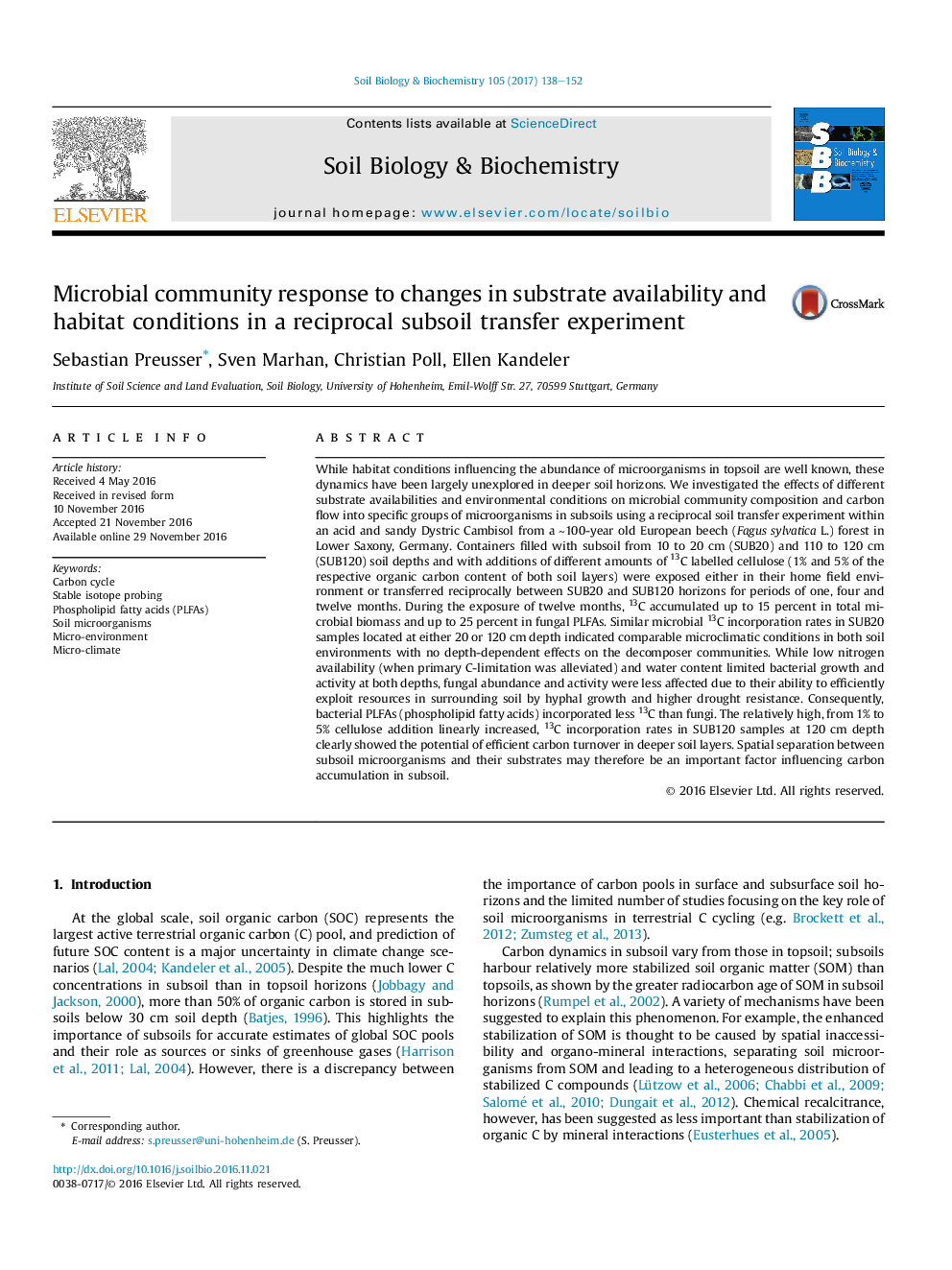| کد مقاله | کد نشریه | سال انتشار | مقاله انگلیسی | نسخه تمام متن |
|---|---|---|---|---|
| 5516511 | 1542579 | 2017 | 15 صفحه PDF | دانلود رایگان |
- Reciprocal soil transfer as an approach to study natural C dynamics in subsoils.
- High 13C cellulose incorporation into fungal community in subsoils.
- Dominance of fungal activity under nutrient and water limitation.
- Spatial separation as important factor for C accumulation in subsoils.
While habitat conditions influencing the abundance of microorganisms in topsoil are well known, these dynamics have been largely unexplored in deeper soil horizons. We investigated the effects of different substrate availabilities and environmental conditions on microbial community composition and carbon flow into specific groups of microorganisms in subsoils using a reciprocal soil transfer experiment within an acid and sandy Dystric Cambisol from a â¼100-year old European beech (Fagus sylvatica L.) forest in Lower Saxony, Germany. Containers filled with subsoil from 10 to 20Â cm (SUB20) and 110 to 120Â cm (SUB120) soil depths and with additions of different amounts of 13C labelled cellulose (1% and 5% of the respective organic carbon content of both soil layers) were exposed either in their home field environment or transferred reciprocally between SUB20 and SUB120 horizons for periods of one, four and twelve months. During the exposure of twelve months, 13C accumulated up to 15 percent in total microbial biomass and up to 25 percent in fungal PLFAs. Similar microbial 13C incorporation rates in SUB20 samples located at either 20 or 120Â cm depth indicated comparable microclimatic conditions in both soil environments with no depth-dependent effects on the decomposer communities. While low nitrogen availability (when primary C-limitation was alleviated) and water content limited bacterial growth and activity at both depths, fungal abundance and activity were less affected due to their ability to efficiently exploit resources in surrounding soil by hyphal growth and higher drought resistance. Consequently, bacterial PLFAs (phospholipid fatty acids) incorporated less 13C than fungi. The relatively high, from 1% to 5% cellulose addition linearly increased, 13C incorporation rates in SUB120 samples at 120Â cm depth clearly showed the potential of efficient carbon turnover in deeper soil layers. Spatial separation between subsoil microorganisms and their substrates may therefore be an important factor influencing carbon accumulation in subsoil.
Journal: Soil Biology and Biochemistry - Volume 105, February 2017, Pages 138-152
